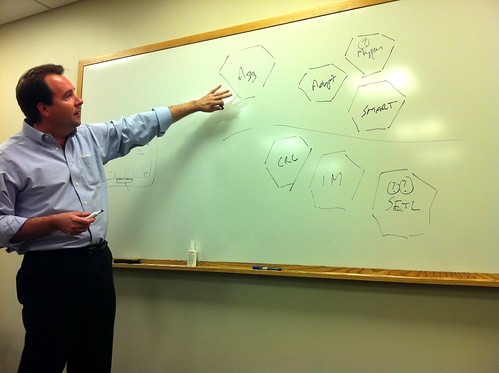This is an interesting piece of news seen on a mailing list. We were surprised to see this announcement regarding Cerner using i2b2 for its clients. As we do not have any relationship with Cerner in this regard, the precise nature of the implementation and its license are not clear. Nonetheless, for those of us working on secondary use of healthcare data using i2b2, this is another signal that our community is growing.
---------------------------------------------------------------------------------------------------------------------
Cerner i2b2 Node - Enabling Research Illumination
A client session of this Illumination is scheduled for Wednesday, April 20, 2011 12:00 PM CT.
Description of Session
The Cerner i2b2 node is a Cerner-hosted solution that improves the performance of i2b2 and facilitates secure data collaborations across multiple institutions. I2b2 (Informatics for Integrating Biology and the Bedside) is a National Center for Biomedical Computing. The informatics initiative is funded as a cooperative agreement with the National Institutes of Health (NIH). Using the Cerner i2b2 node, clients can perform cohort discovery queries on a de-identified dataset, save the query results, access patient identifiers for the saved query with IRB approval, and partner with other participating organizations to share data for cohort discovery queries. The service uses proprietary tools to map client data and improve i2b2 performance. The Cerner-hosted model reduces client investment in IT infrastructure, support, and maintenance
Benefits:
• Data mapping and security capabilities improve performance of i2b2
• Cerner-hosted model facilitates inter-institutional research
• Eliminates costs related to data mapping, security, system maintenance and IT infrastructure
Registration
To register for the session, click the link below. You will need a Cerner.com user name and password.
https://applications.cerner.com/members/illuminations/IllumDetails.aspx?illumid=4158









































